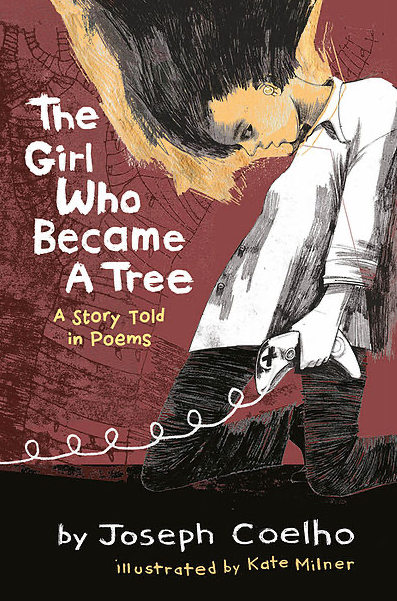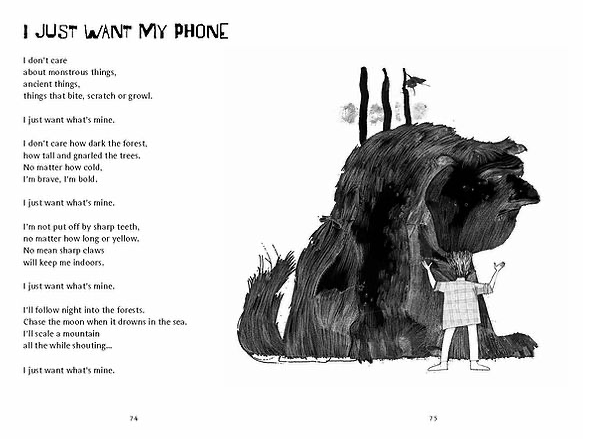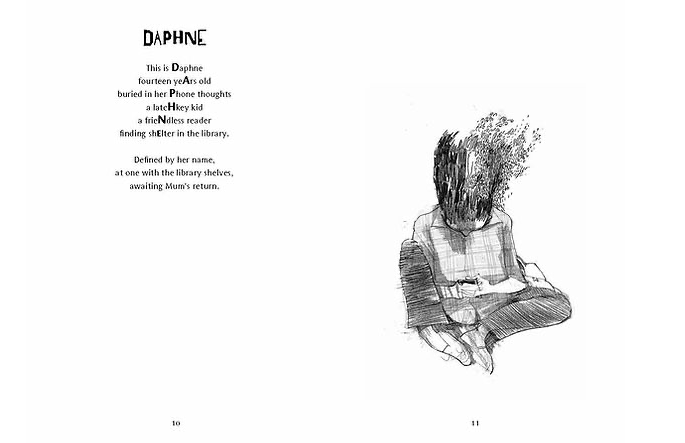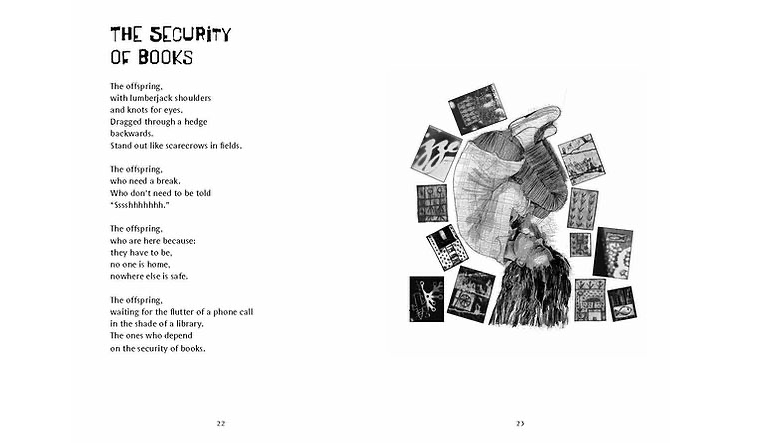The Girl Who Became a Tree – Book Review
Written by Joseph Coelho Illustrated by Kate Milner
Published by Otter-Barry Books ISBN-13: 978-1913074784
Review by Louise Date

The Girl Who Became a Tree follows the story of Daphne, a girl feeling loss and uncertainty, who seeks comfort and security in a library, where the books and her phone block out the world around her. Through a series of verses, Daphne’s story is told as she makes sense of what she knows and doesn’t, and how the world around her makes sense. Joseph Coelho, who has previously written plays and poems has teamed up with Kate Milner, a V&A Illustration award winner, who has produced the eerie black and white illustrations that accompany the text.

Coelho’s verses vary both in tone and structure, mirroring Daphne’s mood as she speaks to the reader, with the font changing accordingly. Speaking eloquently of pain, confusion and the little things humans do to keep themselves occupied, Coelho speaks sometimes as Daphne, and sometimes as an observer looking in at her life. In places a little dark in its inspection of humanity, readers aged 12 and up can get lost in the rich verse, symbolism and variety of ways in which the poet explores a person growing.
The phone.
A crumpled pile
all wires and shards and dust.
The line is dead. Her hand empty.
Hoc vanished.

Milner’s illustrations are, unfortunately, not on all the pages of verse, but they do accompany the text beautifully. Almost exclusively in black and white, the use of mark making is expressive, and in places helps to really punctuate the characters’ feeling, some made with little precision and a childlike, angry sensibility, others very carefully drawn with sensitivity and delicate use of line. Look a little closer at some of the images interspersed on the text, and you’ll notice that some of the ‘drawings’ are in fact, mixed media, with ink and print and photography used together to show a textured, layered effect.
The Girl Who Became A Tree cover itself is possibly the finest piece of Milner’s work on the book, with the very limited use of colour only enhancing the depth and complexity of the monotone within. The title character, half kneeling looks sideways at the viewer, console controller in hand, seemingly with the nape of her neck and bent head ablaze in a textured scratching of mustard yellow, the marks of grey and black and rusty red showing an uncertain figure contorted to fit on the confines of the cover.

While Milner’s illustrations are interesting in their accompaniment of the poems Coelho presents, at times throughout the book they feel like an afterthought: a half page of text with an image of hands reaching, abstract forms or even Daphne herself, sat in white space afterwards. The image clearly follows the mood and tone of the text, and yet, isn’t fully integrated with it. Especially considering the texture Milner has shown in depicting some of the creatures Daphne encounters, as well as little motifs of shape and scratched forms, and the layering of marks used to great effect on the cover, it is a shame that there is not more interaction between image and text.
Overall, The Girl Who Became A Tree is an interesting introduction for mature pre-teens to a poetry that is a step away from rhyming couplets and cats in hats on mats. The verses update some older ideas of finding oneself, growing, knowing and sometimes despairing of the world around us, with Daphne relying on her phone as her lifeline, and using her games console as a way of connecting to her parents, her friends, and blocking out some of the harder, grittier parts of life we sometimes need to stare down.
Back to News Page
